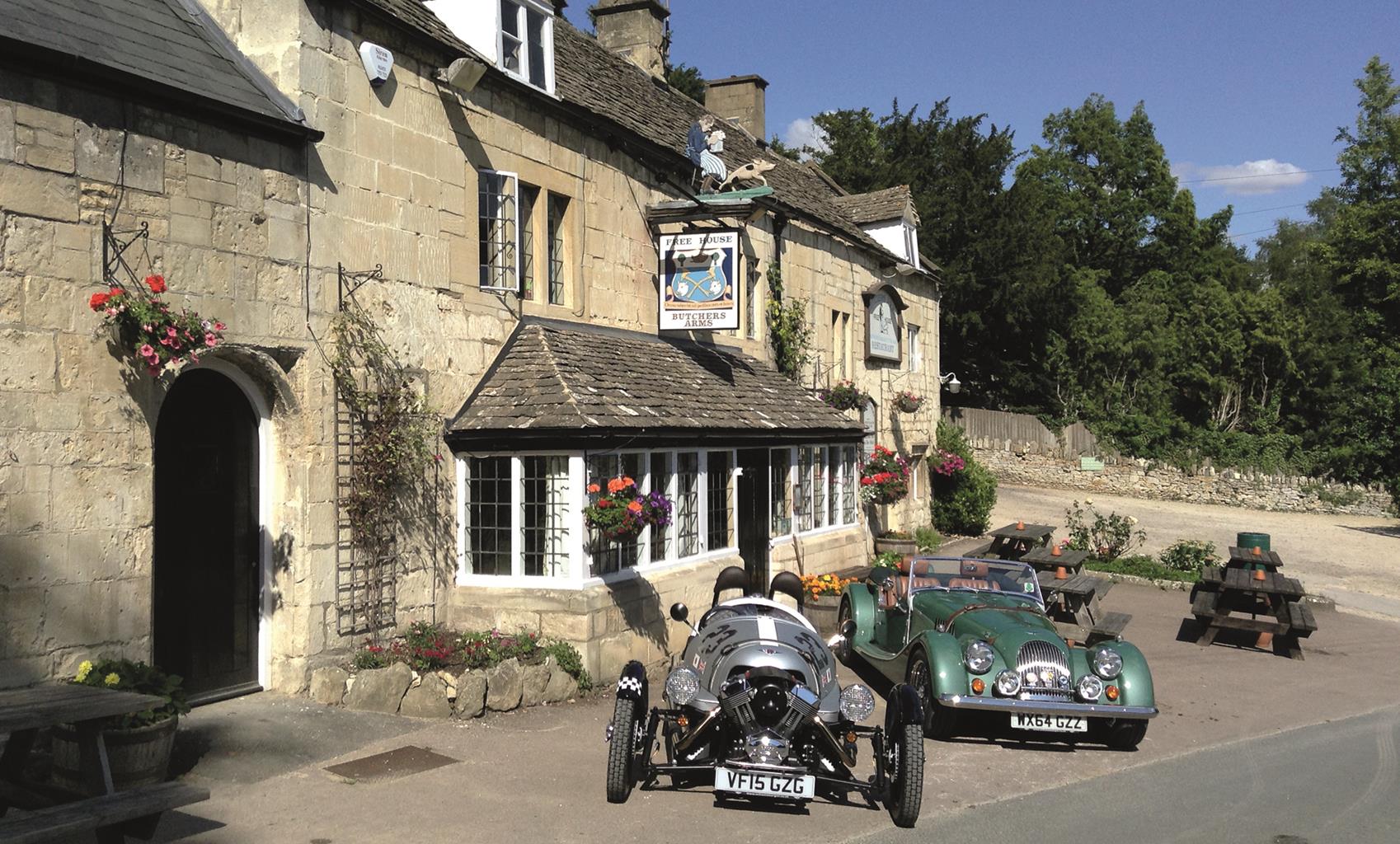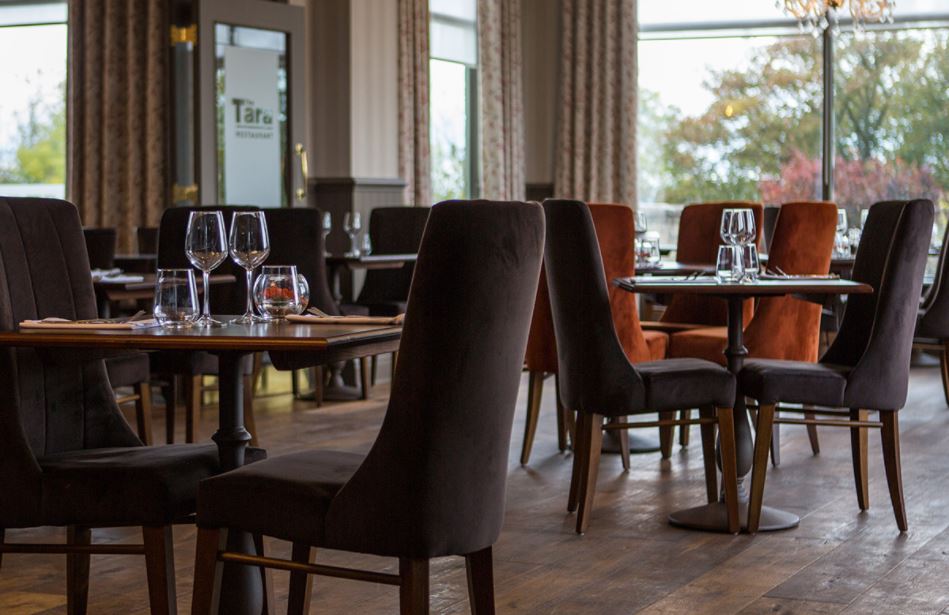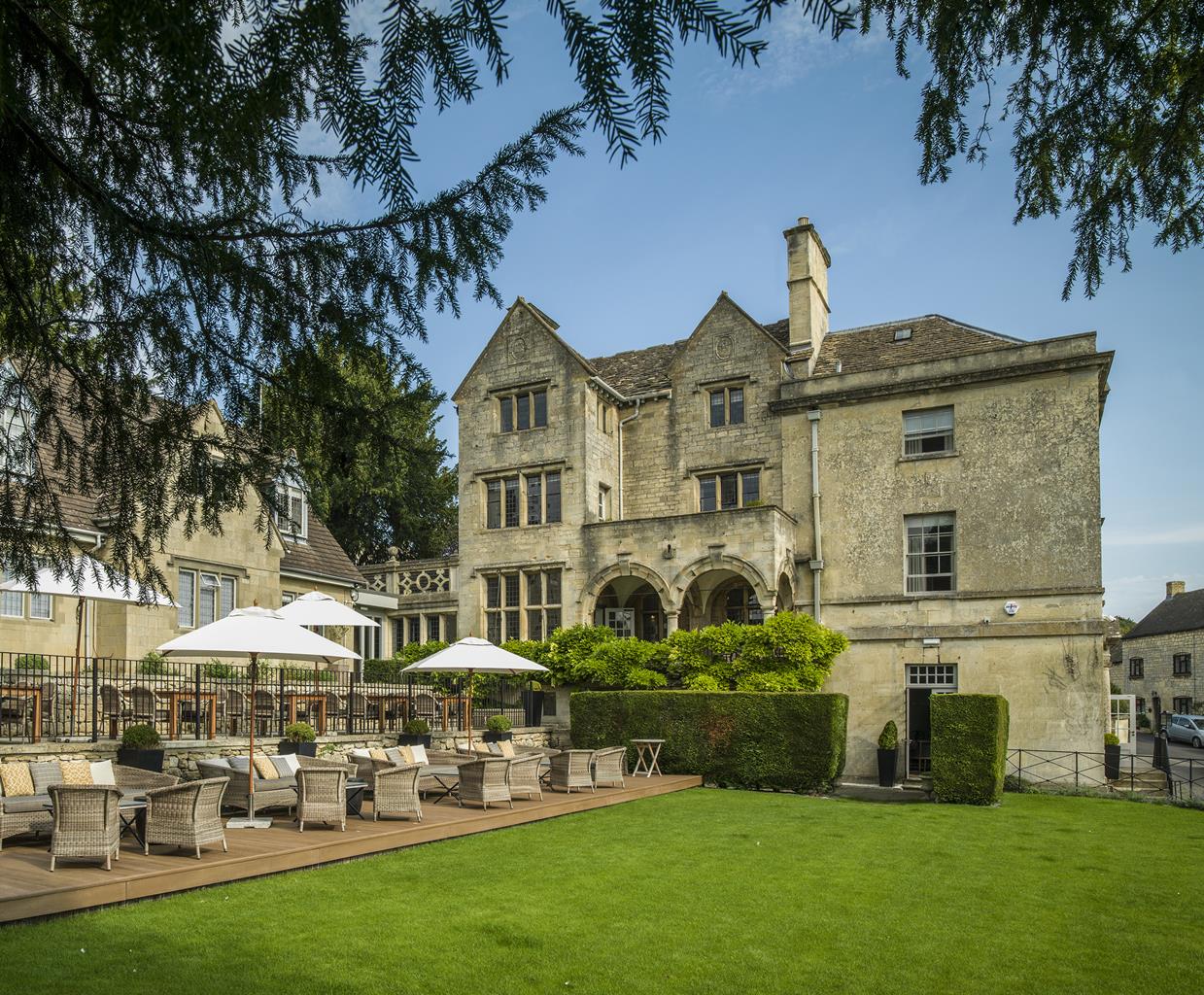The Green Dragon offers all the charm and character of an English country pub combined with a…
Brimpsfield, Syde and Caudle Green

A walk through a vanished castle and secluded valleys.
4 miles (6.4kms)
About the walk
There is something rather poignant about a vanished castle. The manor of Brimpsfield was given by William the Conqueror to the Giffard family. (In early Norman French a gifard was a person with fat cheeks and a double chin.)
The Giffards built two castles, the first of wood on another site, and its stone successor near Brimpsfield Church. In 1322, John Giffard fell foul of King Edward II, following a rebellion that was quelled at the Battle of Boroughbridge in Yorkshire. Giffard was hanged at Gloucester. Consequently the family castle was ‘slighted’ – that is to say, put beyond military use.
In such circumstances local people were never slow to appropriate building materials. Now almost nothing remains of the castle apart from the empty meadow just before the church and some earthworks to its right. Some of the castle masonry found its way into the fabric of the church: on the stone shed to the left of the church there are details that appear to be medieval and which perhaps originally decorated the castle.
Brimpsfield Church – rather lonely without its castle – distinguishes itself on two counts, one being the several medieval tombstones, thought to commemorate members of the Giffard family, that have been brought inside for their protection. The other is the huge base of the tower, which separates the nave from the chancel. It is surmised that this came about due to the addition of a bell turret in the 13th century, followed by a tower in the 15th century.
Syde overlooks the Frome valley. Its early Norman church, perched on the valley slope, has a saddleback tower and a rustic 15th-century roof. It’s worth peering inside to search out the 15th-century octagonal font and the small round window featuring St James, dating from the same period. The box pews are from the 17th century. Don’t miss the tithe barn just to the south of the church. Caudle Green is a typical example of a hamlet that has grown up around a single farm and expanded slightly over the centuries. It is dominated by an elegant 18th-century farmhouse overlooking the village green.
Walk directions
From the car park turn left and when the road bends right, by the war memorial, go left and up the path, signed ‘church’, opposite. Before you reach the church, leave the track by bearing left onto a worn path to a stile. In the next field, go slightly right to a corner and then go over a stile onto a road.
Turn right and follow the road down to just before Ivy Cottage near the bottom. Turn right onto a drive. After 35 paces drop down to the left onto a parallel path, which will bring you back onto the drive. Just before another cottage, turn left and go down into some woodland. Keeping a stream on your left, follow a path for 550yds (503m), joining a broader track, until you emerge on to a gravel track.
Turn left and follow the track as it rises to the right. After 100yds (91m), where the track bears left, go forward over a stile into a field with Brimpsfield House to your right. Go slightly right to another stile, pass a gate on your right, and bear right down to a stile in the bottom corner of the field (close to the pond) amid scrub. Follow the path to cross a bridge and bear left up to a track. Follow this for 250yds (229m), until you reach a waymarked track on the right, just past two gnarled old willows.
Follow the track along the bottom of a wooded valley for about 0.75 miles (1.2km). After crossing the stream on the right, bear left to continue on a grassy track via a gate, with the stream now on the left. Not far after re-crossing to the left-hand bank, you can go left up the slope to visit the church at Syde. Otherwise, remain on the valley floor and continue until you come to a gate. Go through it, then over a stile to pass to the left of a cottage. Follow a drive up to a road.
Turn left and follow the road downhill until it turns sharp left. At this point turn right over a stile to the left of a gate into a field and walk up a steep bank and over a stone stile to arrive on a road in Caudle Green.
Turn right and continue climbing to the village green. Keep ahead along a track towards a large Georgian house, shortly turning right at a sign for Brimpsfield. Follow a winding path in woodland down to the valley bottom and go through a kissing gate. Turn left through another and follow a path along the valley bottom for another 0.75 miles (1.2km). Eventually you will be funnelled between woods to a stile and gate leading into a field.
Continue along the left-hand field edge, then head across the field to a gate. In the next field, follow the left-hand edge ahead to a road and turn left. Re-enter Brimpsfield village, continuing past a telephone box. Turn left at the war memorial and retrace your steps to the village hall.
Additional information
Fields, tracks and pavement, many stiles
Woodland, steep narrow valleys and villages
Some good long stretches free of livestock
OS Explorer 179 Gloucester, Cheltenham & Stroud
Brimpsfield Village Hall car park (in northwest of village)
None on route
WALKING IN SAFETY
Read our tips to look after yourself and the environment when following this walk.
Find out more
Also in the area
About the area
Discover Gloucestershire
Gloucestershire is home to a variety of landscapes. The Cotswolds, a region of gentle hills, valleys and gem-like villages, roll through the county. To their west is the Severn Plain, watered by Britain’s longest river, and characterised by orchards and farms marked out by hedgerows that blaze with mayflower in the spring, and beyond the Severn are the Forest of Dean and the Wye Valley.
Throughout the county you are never far away from the past. Neolithic burial chambers are widespread, and so too are the remains of Roman villas, many of which retain the fine mosaic work produced by Cirencester workshops. There are several examples of Saxon building, while in the Stroud valleys abandoned mills and canals are the mark left by the Industrial Revolution. Gloucestershire has always been known for its abbeys, but most of them have disappeared or lie in ruins. However, few counties can equal the churches that remain here. These are many and diverse, from the ‘wool’ churches in Chipping Campden and Northleach, to the cathedral at Gloucester, the abbey church at Tewkesbury or remote St Mary’s, standing alone near Dymock.
Nearby stays
Restaurants and Pubs
Nearby experiences
Recommended things to do
Why choose Rated Trips?
Your trusted guide to rated places across the UK
The best coverage
Discover more than 15,000 professionally rated places to stay, eat and visit from across the UK and Ireland.
Quality assured
Choose a place to stay safe in the knowledge that it has been expertly assessed by trained assessors.
Plan your next trip
Search by location or the type of place you're visiting to find your next ideal holiday experience.
Travel inspiration
Read our articles, city guides and recommended things to do for inspiration. We're here to help you explore the UK.













